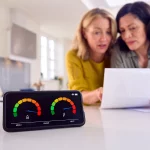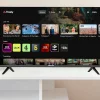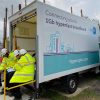Oxford Named First of Three UK Cities to Get New 5G Small Cell Mobile Boost

Mobile infrastructure services provider Cornerstone (CTIL), which handles the UK network sharing agreement between O2 (Virgin Media) and Vodafone (Vantage Towers), has announced that Oxford will be the first of three major UK cities set for “enhanced [5G] mobile connectivity” in 2025 as they deploy a new “city-wide” small cell network.
Small cells are akin to mini shoebox sized mobile (radio) base stations, which are designed to deliver limited coverage (usually up to around 100 metres) and thus tend to be more focused on busy urban areas and specific sites – it’s not uncommon to find these sitting on top of lampposts, CCTV poles or old payphone cubicles (i.e. they can be more cost-effective than building new street assets or trying to secure wayleaves on buildings etc.).
The new deployment in Oxford is being supported by Signify, the global lighting company, and Dense Air, a neutral host platform provider, to deliver “next-generation connectivity through existing street lighting infrastructure“. Oxford will be the first city in the UK to benefit from this project, which aims to deliver “seamless, high-capacity mobile [broadband / data] coverage for businesses, residents, and visitors“.
Advertisement
Pat Coxen, CEO of Cornerstone, said:
“At Cornerstone, we are committed to revolutionising the UK’s digital landscape by delivering cutting-edge mobile infrastructure solutions that empower our customers — Mobile Network Operators — to provide seamless, high-speed connectivity.
Our Oxford deployment is a prime example of how we are working with partners and local authorities to transform urban infrastructure, support economic growth, and create more connected communities. This initiative not only enhances mobile coverage but also reinforces Oxford’s position as a leader in digital innovation.”
Cornerstone, alongside Signify and Dense Air, added that they’ve committed to rolling out similar city-wide small cell deployments in two further UK cities during 2025, with additional locations to follow at a later date. But the details of those plans were not stated in today’s release.
Mark is a professional technology writer, IT consultant and computer engineer from Dorset (England), he also founded ISPreview in 1999 and enjoys analysing the latest telecoms and broadband developments. Find me on X (Twitter), Mastodon, Facebook, BlueSky, Threads.net and Linkedin.























































Not near my home, thank you very much!
Appreciate the heads up.
The 5G is coming to get you!! Mind control!!!!!!!!11111oneoneone
We all know that Oxford struggles with getting a good cellular service, regardless of the network you use. Multiple organisations have teamed up and decided to make things better. Not only will it benefit you – it will benefit your loved ones too, so that they can always get in touch with you no matter where you are.
What would you rather they do? Build an “eyesore tower” instead? The small cells be near impossible for the average person to spot. Both O2 and Vodafone customers will be able to connect at no extra charge. Local businesses will be able to better serve their customers, and local residents won’t have their data slow down to a crawl whenever tourists are in town. I would consider it a “win-win-win” scenario.
Than enjoy poor mobile coverage, O2 are thinking about the majority of their customers not one or two NIMBYs stuck in Victorian times.
One thing Cornerstone did for O2/Vodafone was accelerate the rollout of 4G by standardizing and streamlining so much of the equipment on macro sites & monopoles.
It would be great to see the rollout of small cells accelerated in the same way, rather than the inconsistent patchwork we have right now – especially if they are built with higher band 5G in mind!
This is great that the MNOs are making use of small cells more.
I’d happily have one outside on lamp posts.
For those who hate these things and choose to fear them, should be more scared of their home WiFi hubs and their light bulbs! LoL
@MV – Please tell us about lightbulbs.
Hey T.F!
Radio, Cellular & WiFi work on the lower non- ironising frequencies. Light bulbs work on the higher ironising bands that are so high, it makes light. Yes it’s a tiny amount limited to within the bulb, but it’s just one of many things we have around our homes.
That’s the most basic explanation of it.
Like a WiFi Hub’s 5GHz band [5,000MHz] that is on a higher band than current 5G-NR networks that sit on 3,400mhz – 3,800mhz. All of these are perfectly safe with maximum output levels agreed.
Have a Google about, it’s really interesting stuff.